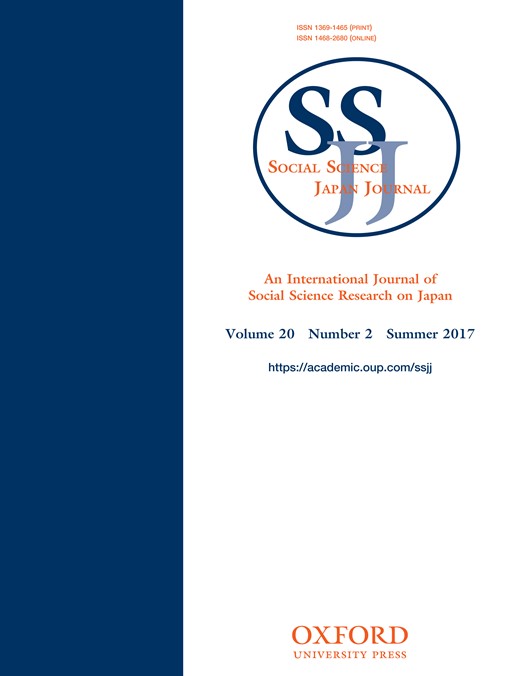-
Views
-
Cite
Cite
Manabu MATSUNAKA, Kigyō tōchi no hō to keizaigaku: Hikakuseido bunseki no shiten de miru gabanansu (Law and Economics of Corporate Governance: A Comparative Institutional Analysis), Social Science Japan Journal, Volume 20, Issue 2, Summer 2017, Pages 313–316, https://doi.org/10.1093/ssjj/jyx013
Close - Share Icon Share
Extract
1. Introduction
This book is a collection of chapters examining various aspects of corporate governance in Japan, written by authors in several different fields of social science. Although each chapter is independent and based on different methodologies, the book has a peculiar characteristic: paying large attention not only to shareholders but also to non-shareholders, especially employees. In this review, I briefly overview the content of each chapter first (section 2). Then, I will discuss structures of postwar corporate governance and ongoing changes of governance in Japan, which emerge throughout the entire book (section 3). Finally, implications from the chapters examining corporate governance in the prewar period are discussed in section 4.
2. Overview of the Book
Following a detailed introduction by Professor Tanaka, part 1 of the book discusses the fundamentals of corporate governance focusing on relationships between firms and non-shareholder stakeholders. The first two chapters are on employment. Chapter 1 introduces theories on employer learning and optimal employment contracts, whereas Chapter 2 discusses an evaluation system of middle-class managers based on in-depth research (Owan et al. 2014) using data from an automobile dealer in Japan. Chapter 3 discusses rules on the modification of a contractual term in a continuous contract. Then, by comparing reforms to the governance of large public firms and universities, Chapter 4 argues that recent reforms of governance in Japan have had a clear trend of limiting autonomous governance by insiders of an organization and replacing it with enforced governance by outsiders.




